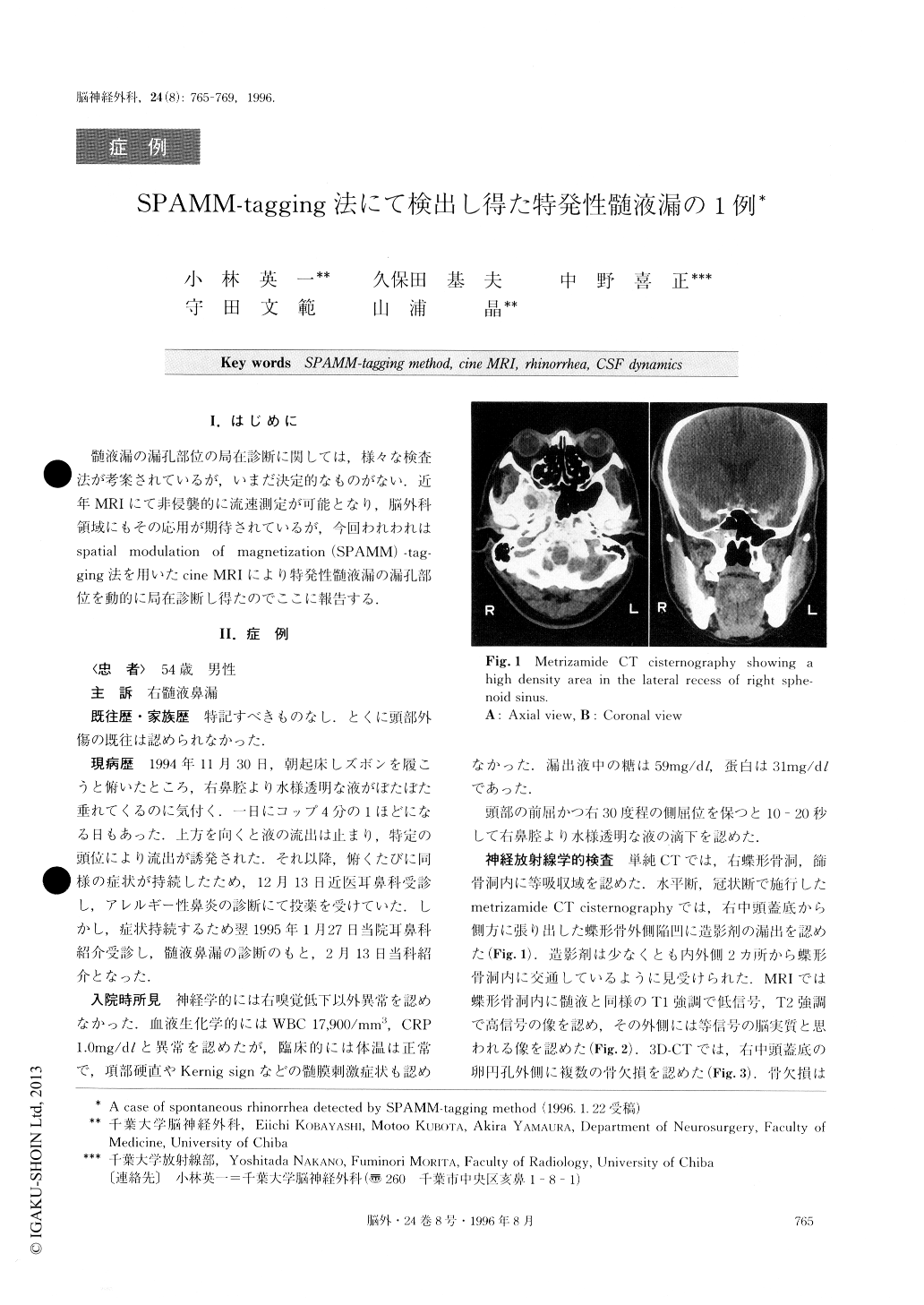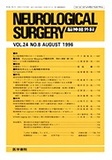Japanese
English
- 有料閲覧
- Abstract 文献概要
- 1ページ目 Look Inside
I.はじめに
髄液漏の漏孔部位の局在診断に関しては,様々な検査法が考案されているが,いまだ決定的なものがない.近年MRIにて非侵襲的に流速測定が可能となり,脳外科領域にもその応用が期待されているが,今回われわれはspatial modulation of magnetization(SPAMM)—tag—ging法を用いたcine MRIにより特発性髄液漏の漏孔部位を動的に局在診断し得たのでここに報告する.
This is the first report of rhinorrhea detected by spa-cial modulation of the magnetization (SPAMM)-tagging method.
A 54-year-old male was admitted to our hospital for treatment of right rhinorrhea which had continued for 2 months and a half. The CSF leakage was induced by specific head position and the volume was more than 50ml a day. Metrizamide CT cisternography revealed the contrast medium in the lateral extension of the right sphenoid sinus. MRI demonstrated liquorrhea with abnormal intensity of the sinus. 3D-CT revealed bony defects at the temporal base. Operation revealed herniated brain through the same bony defect of the temporal base into the extended sphenoid sinus. Post-operative diagnosis was Morley's rhinorrhea. The leak-age point was closed and patched with the femoral fascia.
Preoperative SPAMM-tagging image with cine MRI was useful to identify the responsible leakage point as a disorder of lattice tags. This method is a kind of flowmetry with MRI and is very effective because it can detect non-invasively slight CSF motion into the sinuses. It can also detect the direction and rough flow volume of rhinorrhea, so may also predict the risk of meningitis. The disadvantages were also discussed.

Copyright © 1996, Igaku-Shoin Ltd. All rights reserved.


